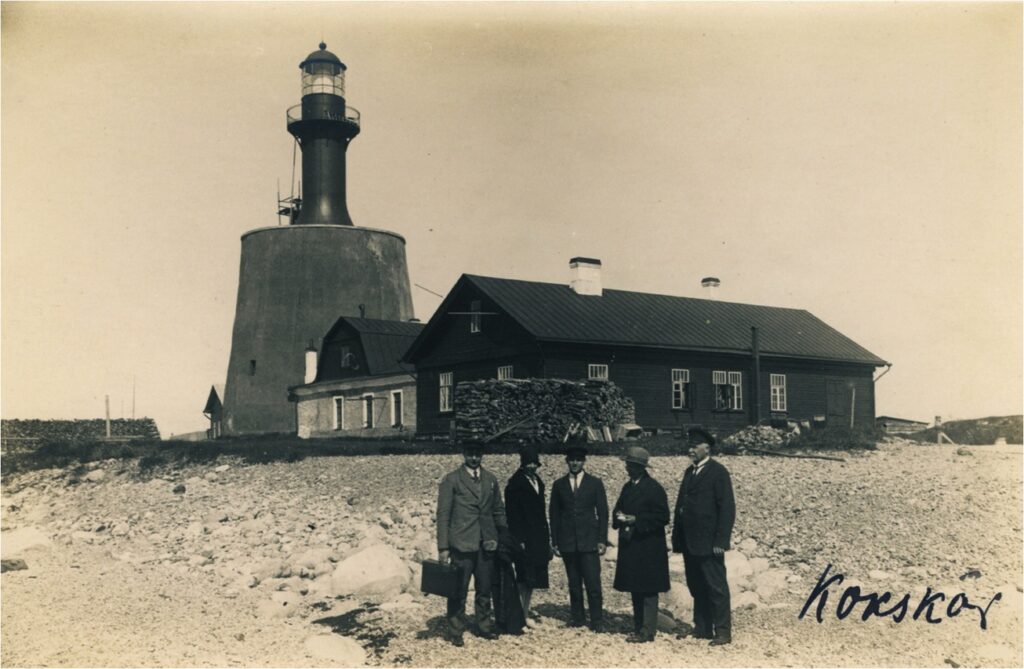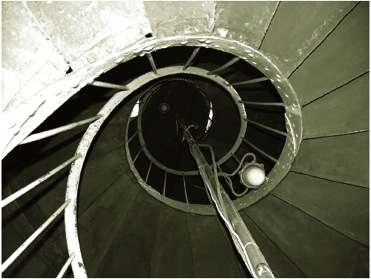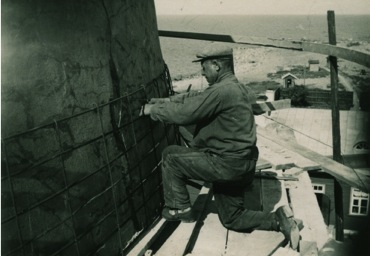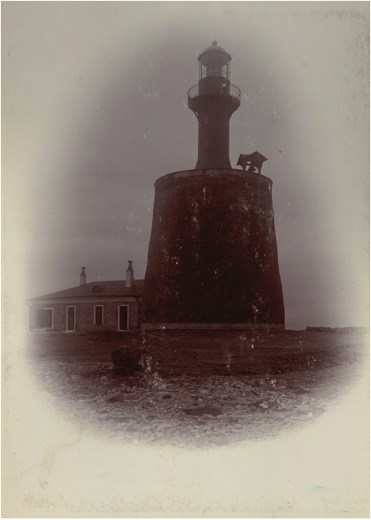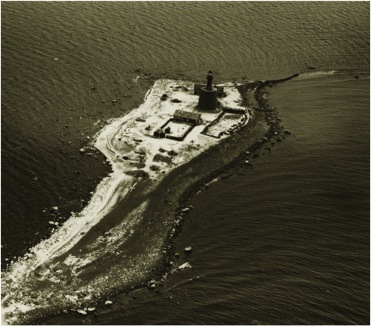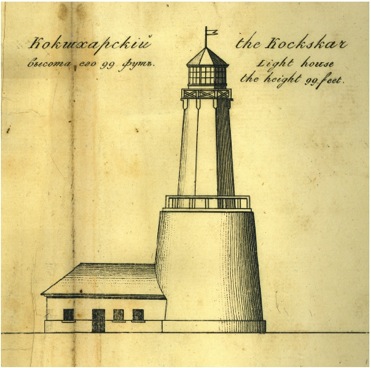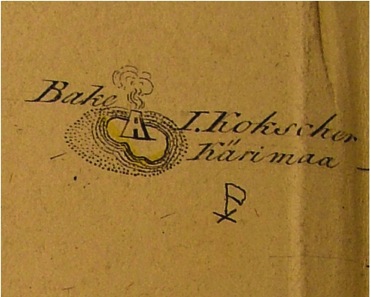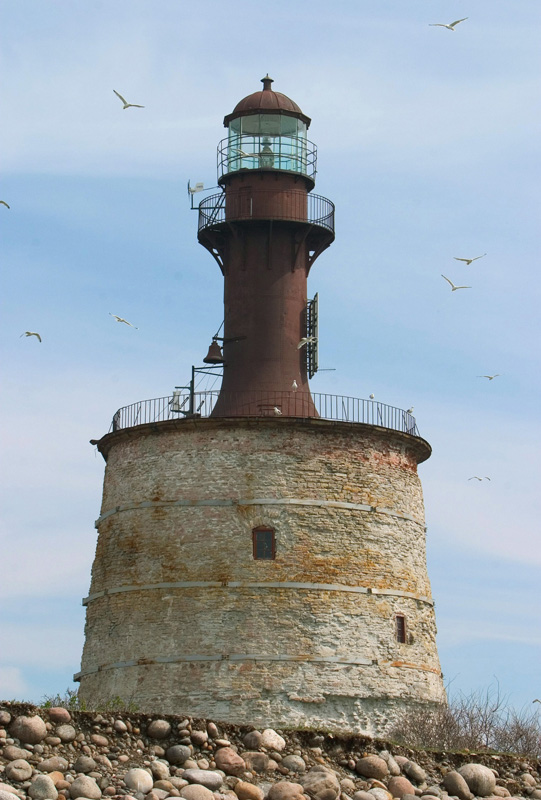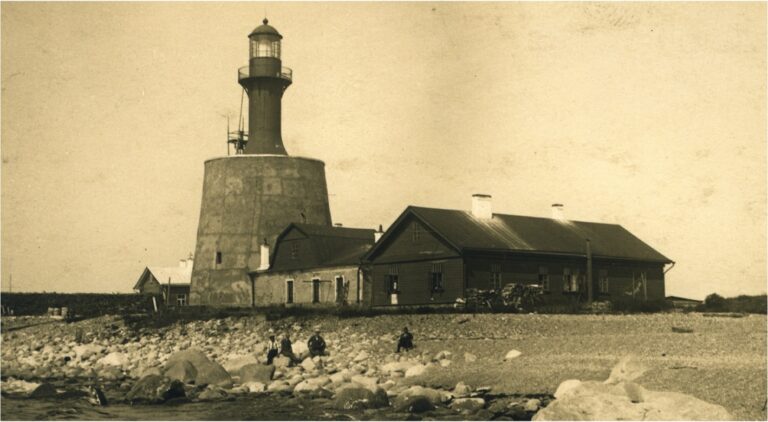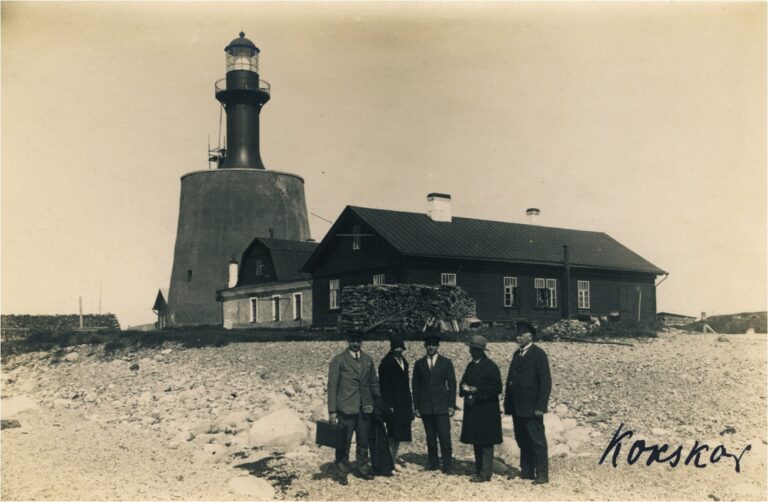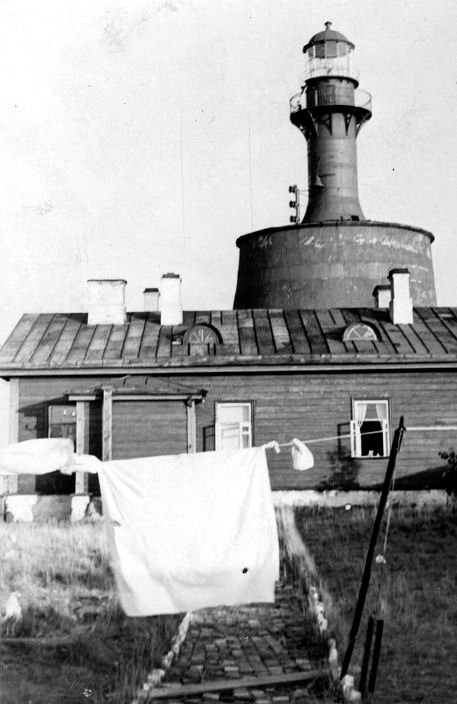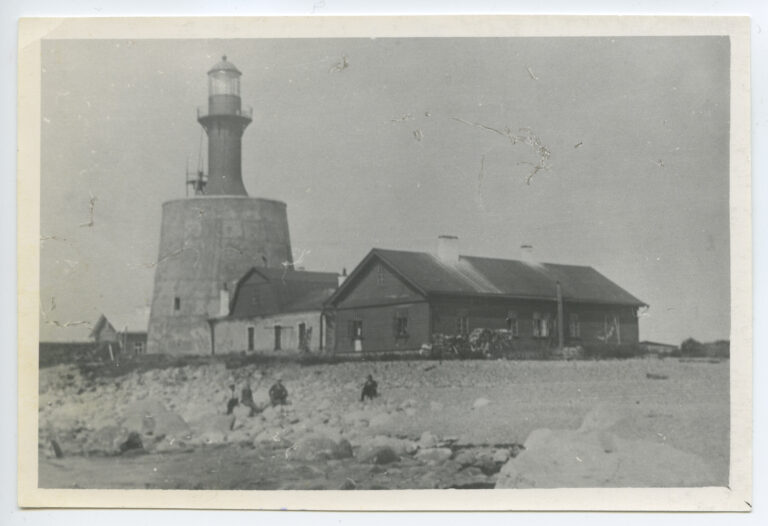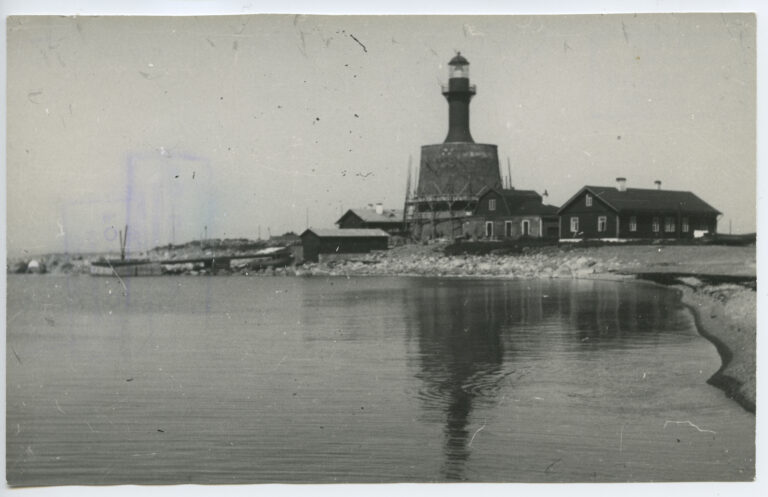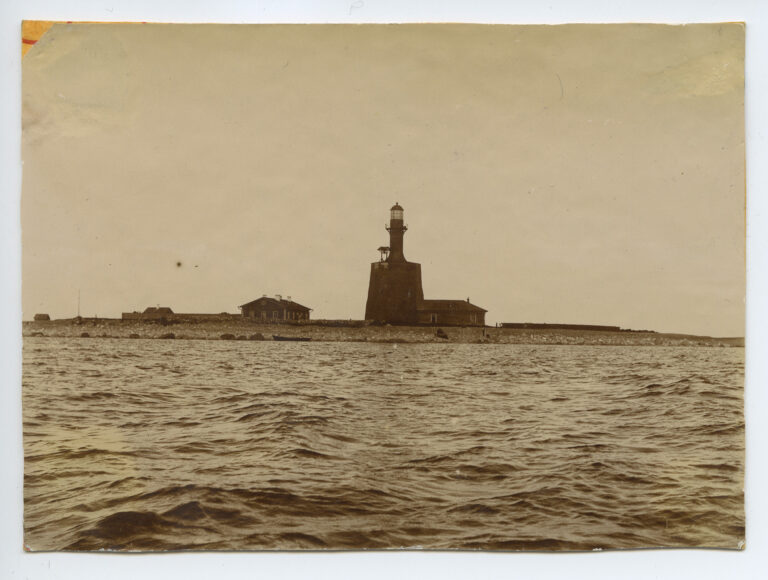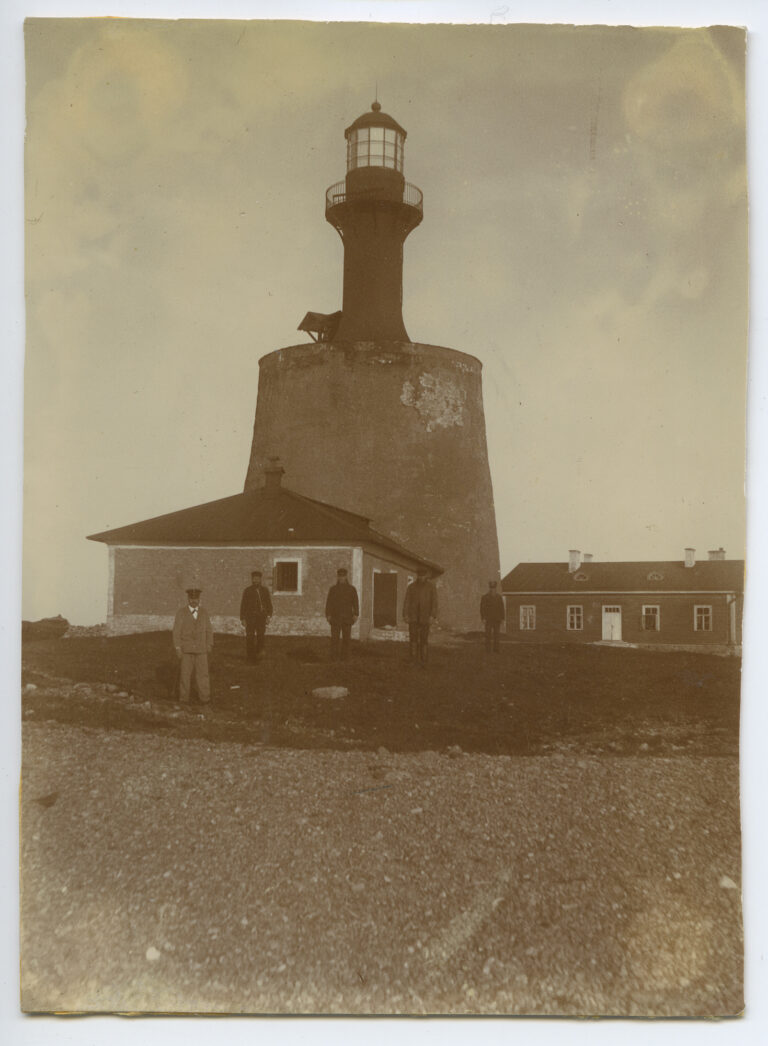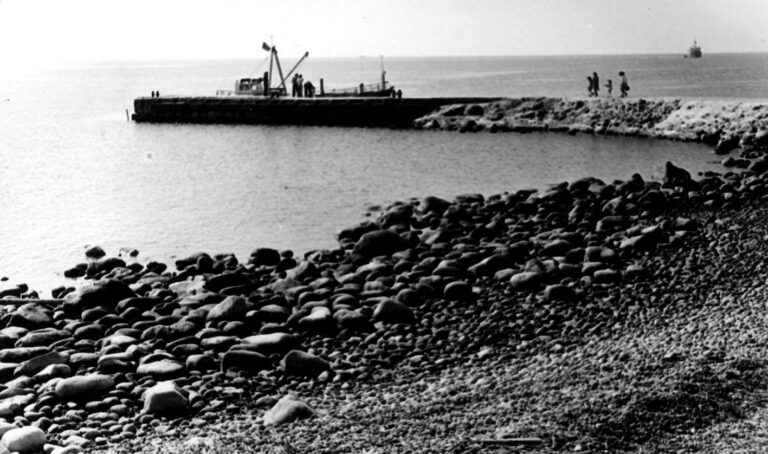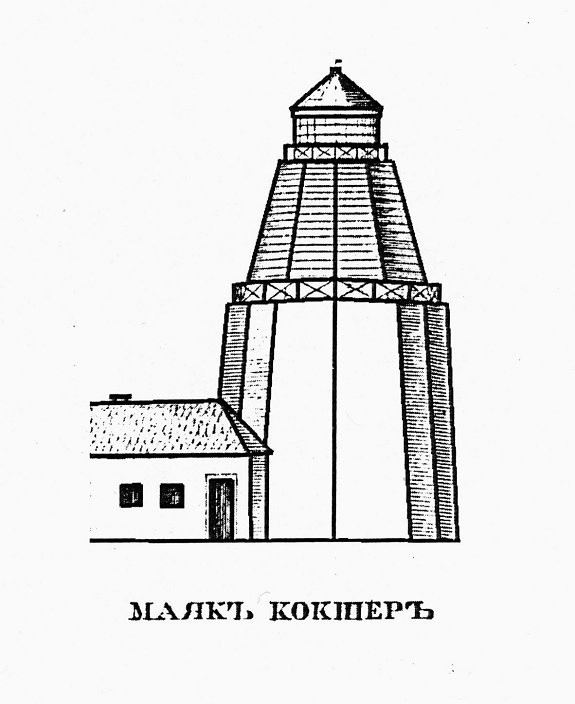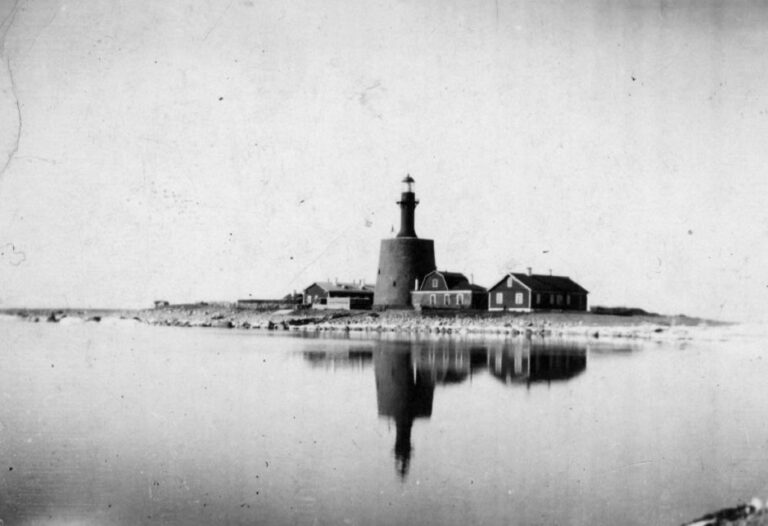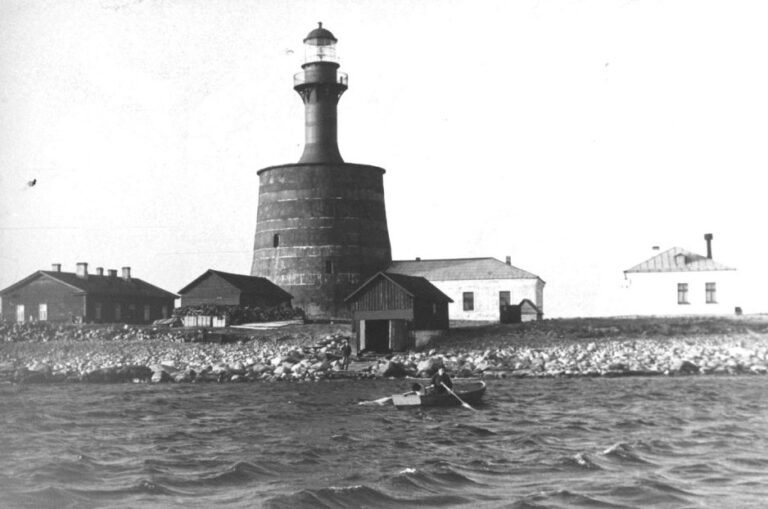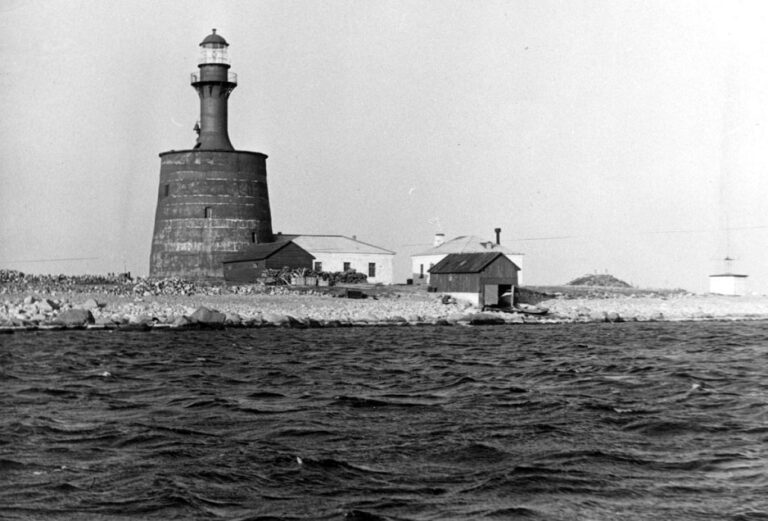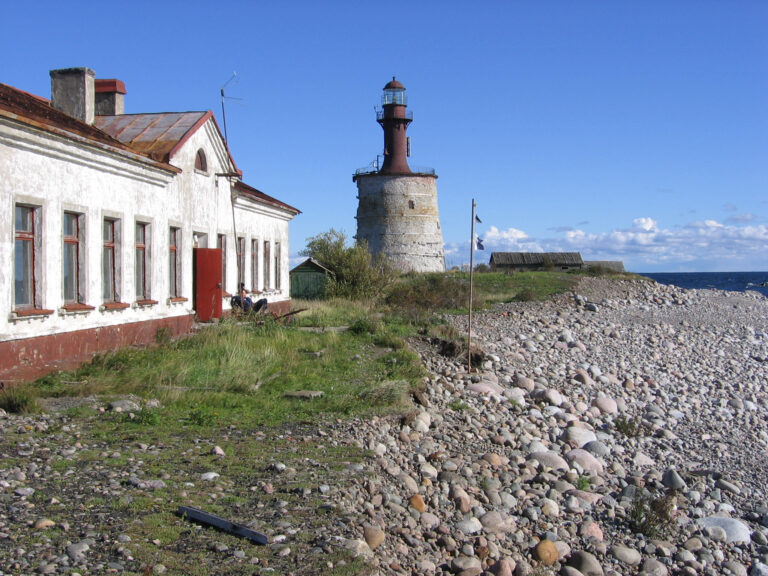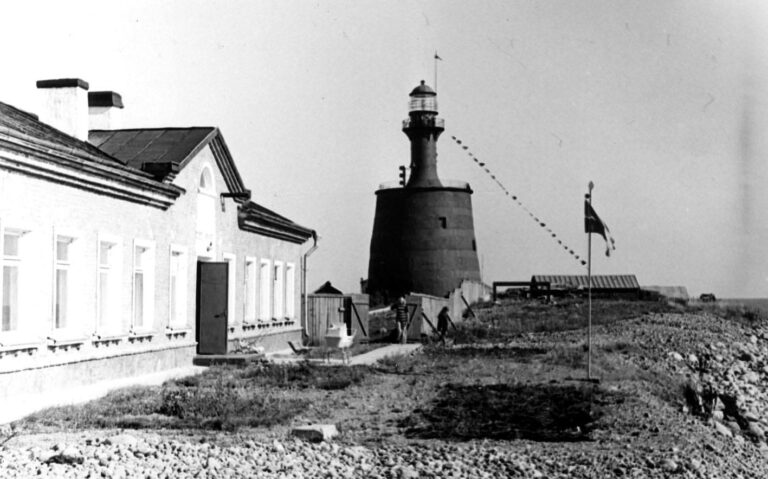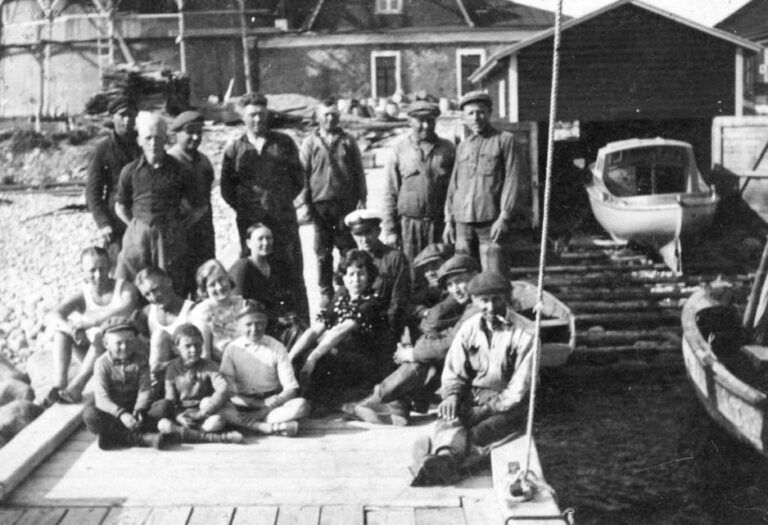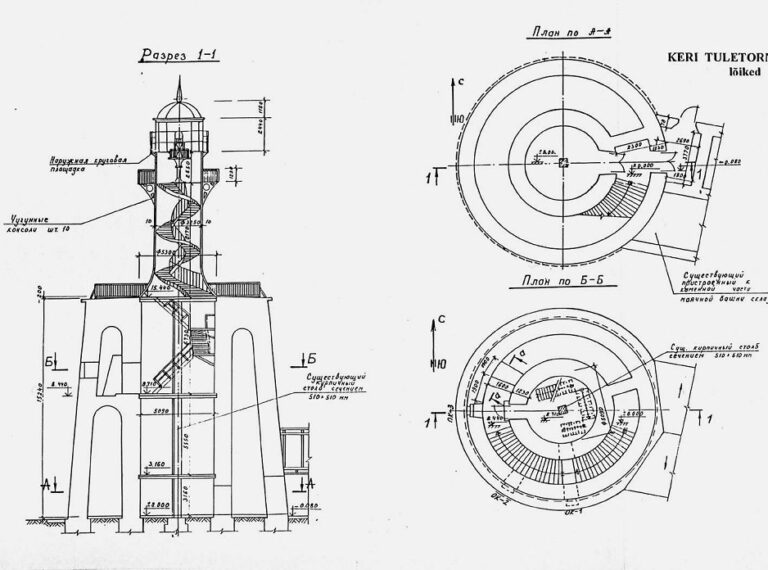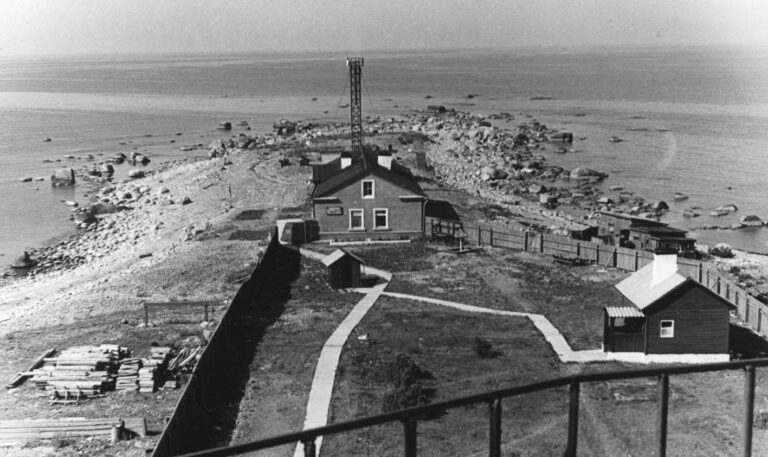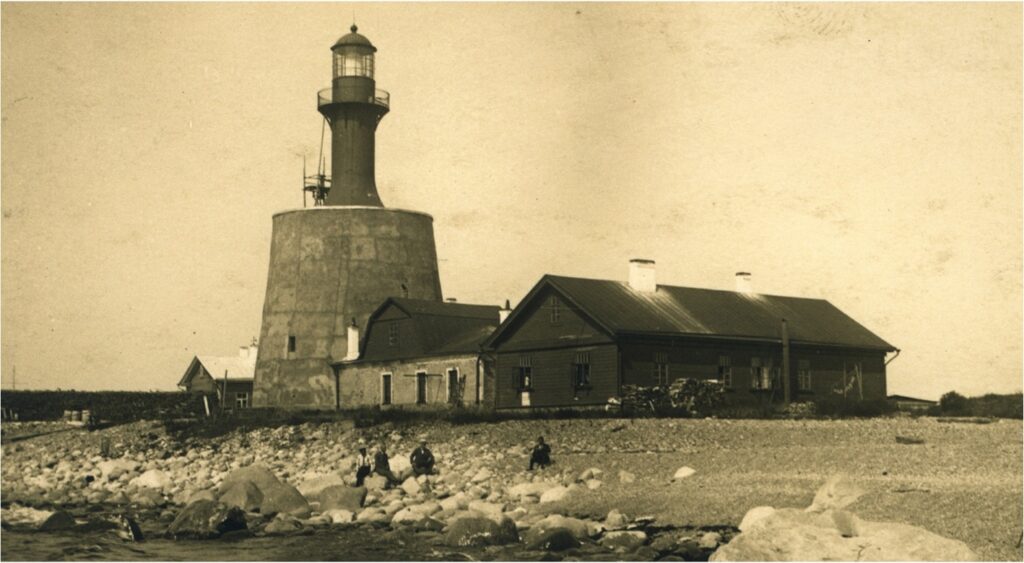
Located on the uninhabited, small, barren island of Keri (Kokskär) in the Gulf of Finland, 3.3 miles north of the island of Prangli, the lighthouse helps navigate and warns of the island's large shipping lanes. The first sea marker similar to the pillar on the island of Keri can be assumed from Petter Gedda's nautical chart of 1695. In 1718, Peter I ordered a stone pillar 30 to 50 feet high to be built on the island of Keri, on top of which it would be possible to light a fire, and in 1723 he ordered a fire to be lit on the island of Keri, along with other islands in the Gulf of Finland such as Vaindloo, Suursaari and Kotlin.
The first mark of Keri can be found on the island of Petit Saimaa.
The first wooden lighthouse was completed in 1724. Alexei Nagayev's 1789 logbook mentions a 106-foot lighthouse on the island of Keri, whose rather large lantern room was used to keep the fire going on autumn nights. It is known that in the late 18th century the Keri lighthouse crew included a skipper and 5 sailors. In 1800, construction of a stone tower on the island of Keri was started, but was completed lower than planned due to difficulties in supplying materials and recruiting labour.
In 1803, an eight-storey wooden tower 99.5 feet above sea level was built on top of the stone section. For the first time in Tsarist Russia, the 12-storey lantern room was fitted with catoptric lighting devices - 16 hemp lamps with copper reflectors, made in a St Petersburg factory on the model of a reflector brought from England. As the experiment was deemed a success, in 1804 Captain Leonti Spafarjev proposed that all lighthouses should switch to the new lighting technology.
In 1858, the old wooden part of the Keri lighthouse was replaced by a metal tower made in St Petersburg from prefabricated sheet metal on a conical stone base. Once again, it was the first in Russia to be equipped with a stage II dioptric apparatus with a permanent light, commissioned from Henry LePaute's factory in Paris, whose light, 32 m above sea level, was visible for 12 miles. The 31-metre lighthouse was painted dark brown and the lantern room roof green. In 1876, the lighthouse was converted to kerosene lighting. Around 1895, the Keri lighthouse was equipped with a large fog bell mounted on the roof of the stone section. Remarkably, between 1907 and 1912, Keri lighthouse was the only lighthouse in the world to be powered by natural gas from the same ground.
The lighthouse was equipped with a watermelon, which was installed on the roof of the lighthouse.
In the 1930s, a boat bridge was built on the island, supported by stone-filled girders, and a four-metre-high and 15 cm-thick reinforced concrete pier was built around the stone part of the lighthouse to prevent the outer wall of the tower from collapsing. In 1996, a quarter of the stone frame collapsed under the outer wall, and in the same year, temporary metal rebars were placed around the structure. Major restoration work would be needed to prevent its destruction.
During World War II, the lighthouse's light apparatus was destroyed, the surveyor's house and barn, built in the second half of the 19th century, and the siren motorists' dwelling, built in the late 1920s, burnt down. A new dwelling and generator building were built on the Soviet track. In 1995 the lighthouse was converted to an automatic lighting and control system powered by solar and wind energy.
A number of industrial buildings have been preserved, but the siren's house built in the second half of the 19th century, the sauna (1925), the well (1930s), the boathouse (1936), the stone dwelling house (1955), the generator house (1961) and other technical buildings remain unused.
The technical condition of the tower is in a state of disrepair and urgently needs major restoration work, for which no money has yet been found. An NGO, the Keri Society, has been set up to look after the island and the lighthouse. The Keri lighthouse, with its unique architectural form, is a nationally protected cultural monument and is included in the list of 100 lighthouse architectural monuments selected by the International Association of Marine Aids to Navigation and Light-house Authorities (IALA).
